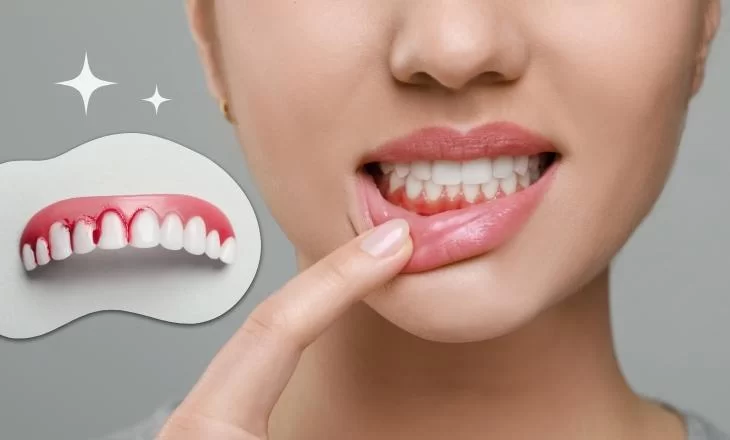
How to Prevent Gum Disease and Keep Your Gums Healthy
- Understanding Gum Disease and Its Causes
- Daily Care Tips for Healthy Gums
- Recognizing Early Signs of Gingivitis
- Advanced Strategies to Prevent Gum Disease
- Real-Life Success Stories: Gum Disease Prevention in Action
Understanding Gum Disease and Its Causes
Gum disease, also known as periodontal disease, starts as gingivitis, an inflammation of the gums, and can progress to more serious conditions like periodontitis if left untreated. The primary cause of gum disease is poor oral hygiene, which encourages plaque buildup around the teeth and gums. Plaque is a sticky film of bacteria that can cause inflammation and infection if not removed regularly. Smoking, poor diet, and certain health conditions can also increase the risk of developing gum disease.
Daily Care Tips for Healthy Gums
The first step in keeping your gums healthy is following a thorough daily oral hygiene routine. Brushing your teeth twice a day with fluoride toothpaste helps remove plaque and prevent the buildup of harmful bacteria. Don't forget to floss at least once daily, as flossing removes plaque and food particles from between your teeth, where your toothbrush might not reach. Additionally, using an antimicrobial mouthwash can help reduce plaque buildup and keep your gums in top shape.
Brush Properly
Brush for at least two minutes, ensuring that you brush along the gum line and the back of your teeth. A soft-bristled toothbrush is ideal to avoid damaging your gums. Replacing your toothbrush every 3-4 months is important to ensure maximum cleaning efficiency.
Flossing Is Crucial
Flossing removes debris and plaque from between your teeth, reducing the risk of gum disease. Be sure to floss gently to avoid injuring your gums, which can lead to infections.
Recognizing Early Signs of Gingivitis
Gingivitis is the early stage of gum disease and can often be reversed with good oral care habits. Symptoms include swollen, red, or bleeding gums, particularly when brushing or flossing. If left untreated, gingivitis can develop into more severe gum disease, so it is important to pay attention to these early warning signs.
Common Symptoms of Gingivitis
- Red, swollen gums
- Bleeding while brushing or flossing
- Persistent bad breath
- Sensitivity in the gums
Advanced Strategies to Prevent Gum Disease
For those already at risk for gum disease, there are additional strategies to consider. Regular visits to the dentist are key for early detection and professional cleaning. Dentists can remove plaque and tartar buildup that can't be removed by regular brushing and flossing.
Professional Cleanings
A professional cleaning, also known as scaling and root planing, can help prevent gum disease from advancing. Your dentist or hygienist will clean beneath the gum line to remove tartar, which brushing cannot reach. This procedure can be done annually or as often as necessary, depending on your risk level.
Healthy Lifestyle Choices
Adopting a healthy lifestyle can play a crucial role in preventing gum disease. Eating a balanced diet rich in vitamins and minerals, especially vitamin C, helps support gum health. Avoiding tobacco products, which increase your risk for gum disease, and managing chronic conditions like diabetes can further reduce the risk of developing gum problems.
Real-Life Success Stories: Gum Disease Prevention in Action
Many people have successfully prevented or reversed gum disease by adopting better oral hygiene habits. For example, Sarah, a 42-year-old woman, struggled with bleeding gums for months before realizing it was a sign of gingivitis. After adopting a better brushing and flossing routine, she saw a significant improvement in her gum health within a few weeks. Her story is a testament to how effective consistent care and regular dentist visits can be.
Another case involves John, who had severe gum disease due to smoking and poor diet. After quitting smoking and following a strict oral care regimen, he was able to stabilize his gum health. Regular check-ups and professional cleanings helped prevent further deterioration.
Conclusion
Preventing gum disease is not just about having a beautiful smile; it's about protecting your overall health. By following these tips, staying vigilant about your oral hygiene, and seeking professional help when necessary, you can keep your gums healthy and avoid the pain and complications of gum disease.
For those serious about maintaining their gum health, consider investing in high-quality dental products, such as toothbrushes with soft bristles, antimicrobial mouthwashes, and premium floss. These tools will help you maintain the best oral hygiene possible and support your journey toward healthier gums.







 Fine Dental Care4.0 (373 review)
Fine Dental Care4.0 (373 review) ForwardDental Madison West4.0 (220 review)
ForwardDental Madison West4.0 (220 review) Kocian Family Dental5.0 (486 review)
Kocian Family Dental5.0 (486 review) All Star Dental Clinic4.0 (322 review)
All Star Dental Clinic4.0 (322 review) Kurtis R. Finley DDS (Palo Alto Endodontic Group)5.0 (5 review)
Kurtis R. Finley DDS (Palo Alto Endodontic Group)5.0 (5 review) Pro Dentists of Buford4.0 (575 review)
Pro Dentists of Buford4.0 (575 review) The Importance of Oral Health Education During Pregnancy for a Healthy Pregnancy
The Importance of Oral Health Education During Pregnancy for a Healthy Pregnancy Best Tips for Brushing Your Teeth Properly for Healthy Gums: Essential Techniques for Oral Health
Best Tips for Brushing Your Teeth Properly for Healthy Gums: Essential Techniques for Oral Health Why Skipping Dental Checkups Can Lead to Bigger Oral Health Problems
Why Skipping Dental Checkups Can Lead to Bigger Oral Health Problems Advantages of Porcelain Dental Restorations
Advantages of Porcelain Dental Restorations How Can Diabetes Cause Tooth and Gum Problems? Preventing and Managing Oral Health Issues
How Can Diabetes Cause Tooth and Gum Problems? Preventing and Managing Oral Health Issues Healthy Habits for Promoting Good Oral Health and Hygiene: Tips for a Healthy Smile
Healthy Habits for Promoting Good Oral Health and Hygiene: Tips for a Healthy Smile